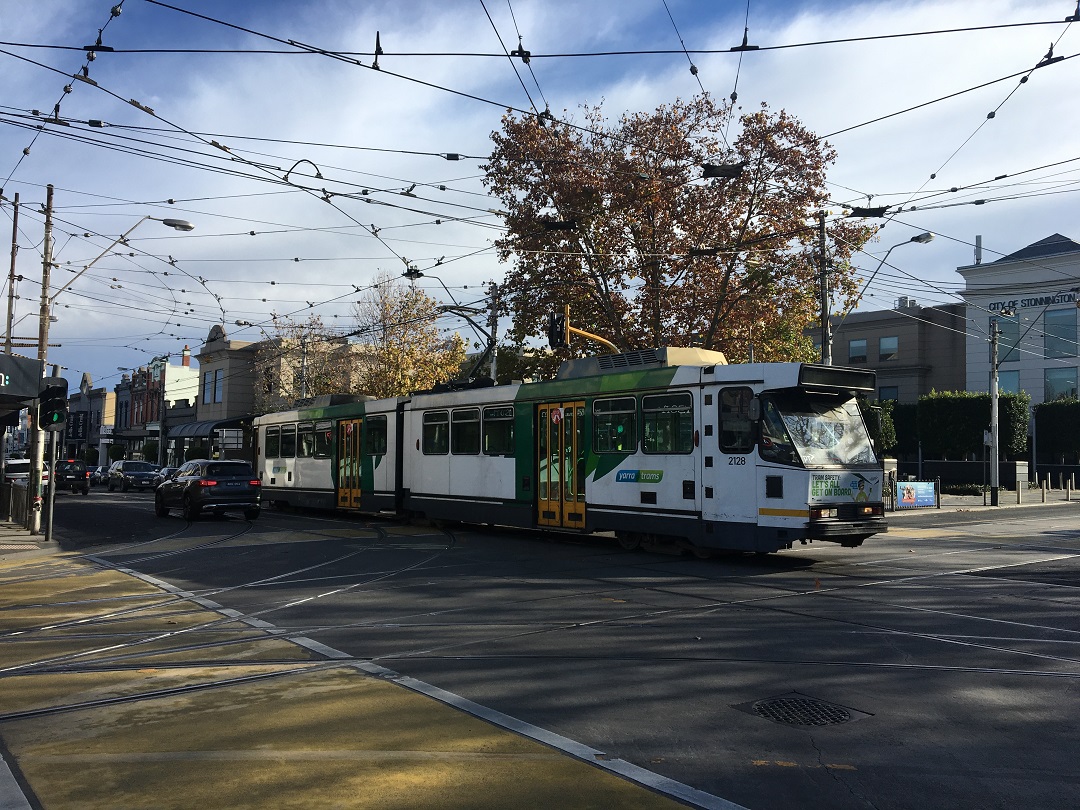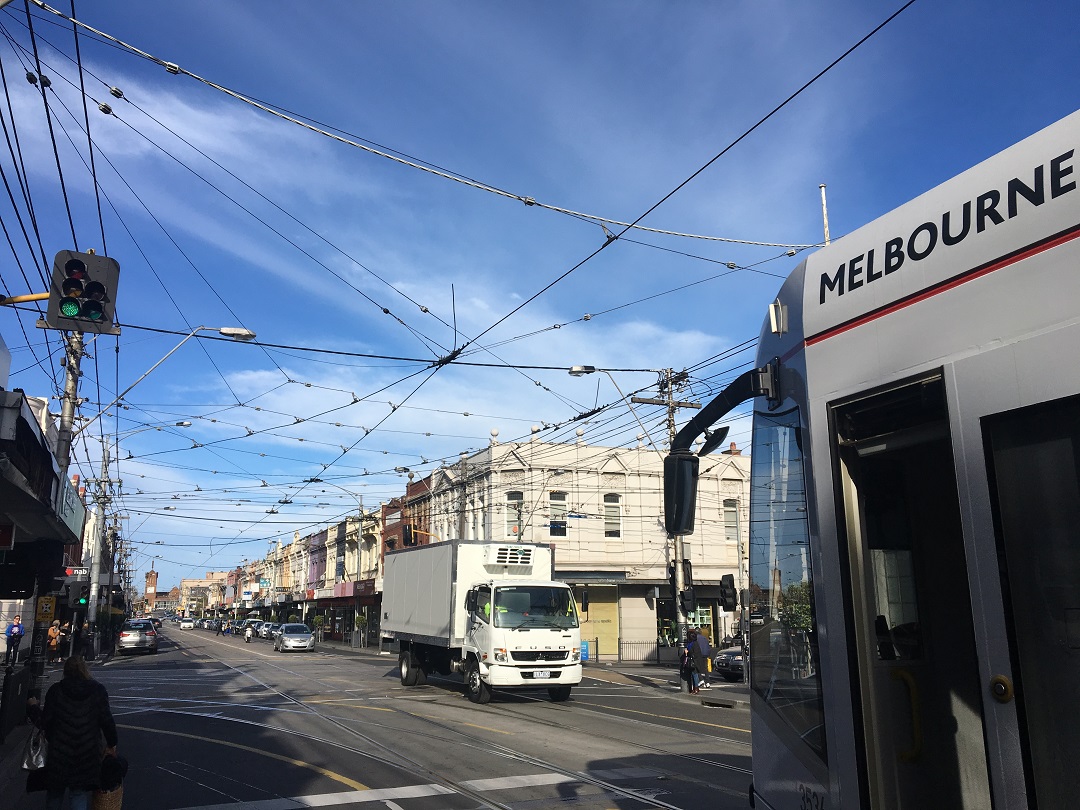
Flies to the urban spiderweb—we’re doing away with overhead tram lines.
Trams are as Melbourne as the MCG and an obsession with coffee. But while Melbourne has the world’s largest tram network (250 km), other Australian cities like Sydney and Newcastle are rekindling their love affair with light rail.
Until recently it’s come at a cost, the thick “spiderweb” of overhead cables needed to keep electrified light rail on the move. They’re ugly, costly to maintain and require their own complex network of infrastructure and sub-stations.
Now though, there’s a new kid on the block that could do away with overhead power lines and move everything safely onboard the tram. Supercapacitors are milk carton size devices that can store large amounts of energy, release it in fast bursts, and then recharge rapidly. It means a tram could arrive at a stop, be charged up with megawatts of power in a minute, then continue on its way. All without the need for overhead power lines.
We’re working on a range of supercapacitor projects with the Australian Government’s Rail Manufacturing Cooperative Research Centre and the China Railway Rolling Stock Corporation (CRRC).
CRRC is renowned for building the world’s first supercapacitor-powered light rail. Now we’re working with them to develop an improved energy management system to make the technology commercially viable. That has involved updating cell balancing, charge and discharge profiles, and communications between the on-board system and the supercapacitors.

Talk about grid-lock—Melbourne’s overhead power lines.
A new prototype, developed in Sydney, has already been sent to China for testing.
Getting rid of overhead power lines would mean the sky’s the limit for light rail. It opens the way for more design flexibility and taller trams that can carry vastly more people. All while greatly reducing construction and maintenance costs. Regenerative braking could also be used to harness the kinetic energy of slowing a tram and turn it into a sustainable power source to get it moving again.
Australia’s rail supply industry employs more than 15,000 people in the manufacturing sector, in businesses ranging from small enterprises through to large multinationals. By cooperating with global partners like CRRC we’re developing new technology that allow the industry to improve its capability and international competitiveness.
And given Australia’s new fondness for light rail, our technology could soon be coming to a street – but not sky – near you!
Did you know:
- Melbourne’s trams travel far enough a year combined to make 32 return trips to the moon.
- Before it closed in 1961, Sydney’s tram network was Australia’s most extensive (291 km) and remains the nation’s largest ever public transport carrier, moving 400 million people a year.
- Broken Hill once had a tram line. It transported passengers and silver ore to and from the South Australian border.
- Newcastle will have Australia’s first “wireless” light rail system. It’s scheduled to be completed in 2019.
Find this energising?
We’ve got plenty of bright sparks working on next generation electronics.


23rd June 2018 at 4:59 pm
Supercaps are one of those ‘solutions looking for a problem’.
Urban trams with short journeys between stops are an ideal use for this technology. Opportunity for CSRIO to carve a niche here.
23rd June 2018 at 10:36 am
David, why would you doubt the capacity of a charging station to deliver a few megawatts? A suburban train in Melbourne can pull >1.2 Million watts from the overhead lines while accelerating.
I would like to know what method is being used to charge the tram, its limitations and what potential problems exist.
21st June 2018 at 6:52 pm
Of course, that doesn’t really stop some of Melbourne’s trams from changing – some currently fit under bridges that have a clearance of around 3.9 metres, where the pantograph nearly touches the top of the tram. Also, if/when the overhead powerlines are removed, it could allow larger vehicles, namely trucks, to travel along some of Melbourne’s busiest roads.
20th June 2018 at 9:25 am
Amazing stuff,
Supercaps do seem to be the future of quick power storage , I take it this has been developed with your partners at cap-xx and various universities?
Good luck rolling this tech out around the world!
19th June 2018 at 2:42 pm
Seems a positive step. Perhaps more trams rather than taller ones. Will it be safe storing the amount of energy to run a heavy tram, being capacitors? and, with the amount of steel and components in the cables, can they be recycled or repurposed?
22nd June 2018 at 3:23 pm
Hi Helen,
The storing of the energy is safe, and yes the steel/cables can be recycled/repurposed!
Cheers,
Ellen
CSIRO Social Media